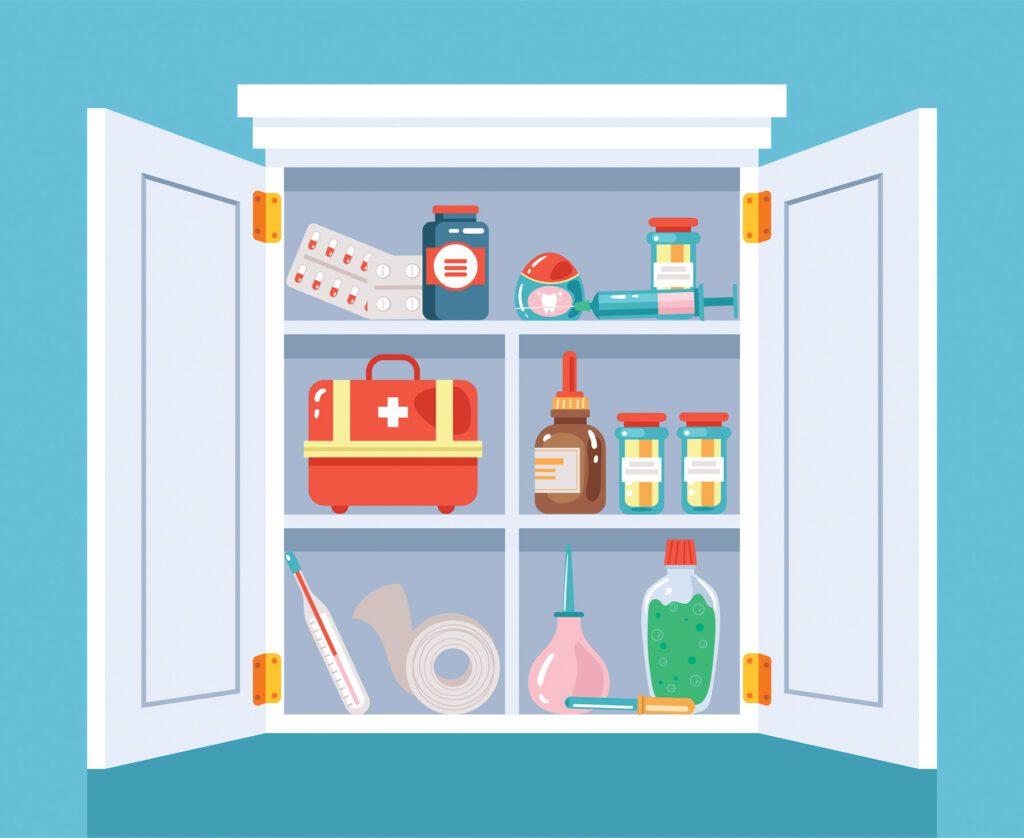Decluttering for Your Health
Any storage space in your home is susceptible to becoming cluttered and overfilled with time. However, most of these spaces contain items which need to be easily identified and easy to use at a moment’s notice – especially in the medicine cabinet! Here, clutter and disorganization can cause health-threatening hold-ups. Read on to discover simple steps to organize your medicine cabinet.
1. Purge
The first and arguably most crucial step to organizing any space is purging the area of unwanted items. In your medicine cabinet, it is very important to dispose of any expired or old prescriptions. Most local police departments and some local pharmacies will accept old prescription drugs during their drug take-back days or even on a daily basis; just call and check. Or, according to the U.S. Food and Drug Administration, you can dispose of them in the household trash by mixing them with an unpalatable substance like dirt, used coffee grounds, or cat litter. Then seal them in a plastic container or bag. Make sure to remove personal information from the prescription containers before throwing them in the trash.

Purging your medicine cabinet is a step that should be repeated often, one to several times a year, to keep it organized and safe. Once you’re done removing unwanted items, remove everything, even what you’re keeping, temporarily for cleaning.
2. Clean
Wherever you store your medication, a cabinet, a closet, a drawer, or anything else, should be cleaned while it’s empty. Wipe down surfaces with disinfecting products, fix anything in disrepair (like a burnt-out light bulb or wiggly shelf), and consider inserting items to keep the space bright and clean, such as a light (if there isn’t one), shelf, or drawer-lining paper.
3. Equip
To make the most of your space, it’s helpful to find storage containers that fit your needs. For medications which are typically smaller items, small baskets or bins work well. Opt for plastic containers, as any leaky liquid medications are much easier to contain and clean in plastic.
Then consider how you’d like to organize your medications. Popular options include by symptom relief, for example: “Digestive,” “Pain,” “Cold,” “Injury,” or by body part: “Eyes,” “Stomach,” “Sinuses,” etc. You can also organize based on which medications are used more often (placed in front) and which ones are not (placed in the back). Make sure to place stronger medications in the back, out of reach of little hands, or install a lock on the cabinet. Once you’ve determined the best method for you and your family, go ahead and label your containers for quick access.
4. Restock
After organizing your medications by your preferred categories, you can return them to their cabinet or closet. If you noticed any gaps in staple items, take the opportunity to restock them. Staples for a home medicine cabinet might include bandages, pain relievers, a thermometer, cough drops, antihistamine, eye drops, antacids, antiseptics, antibiotic ointment, sunscreen, and bug spray.
With a newly organized medicine cabinet, you can feel more secure, because not only can you and your family be sure to have everything you need in case of illness or injury, but you can also monitor your home’s medications more easily. Keeping staple items stocked, expired items properly disposed of, and dangerous items out of reach of children or pets is a helpful and healthy way to manage your medications! HS

